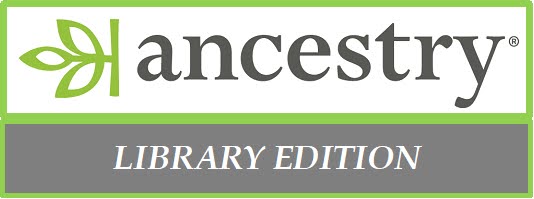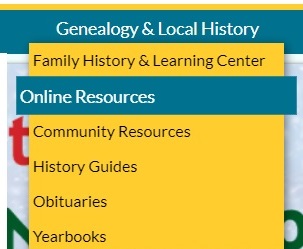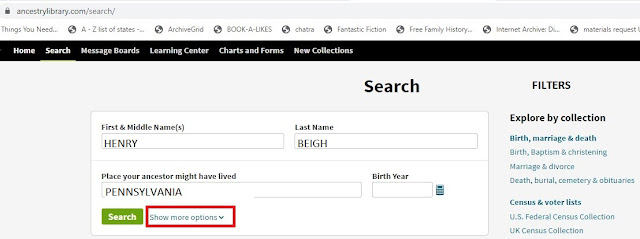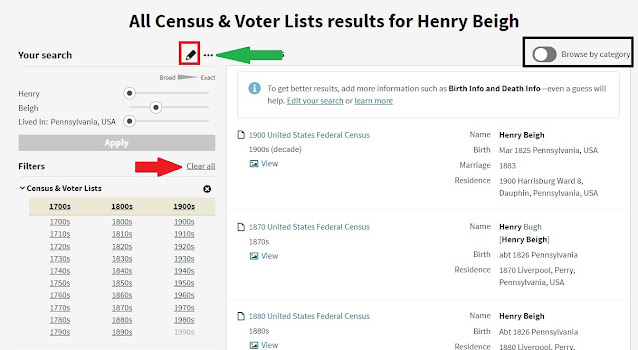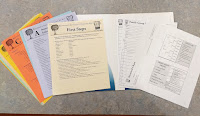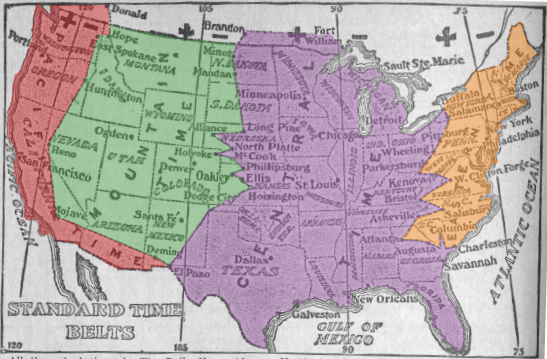Medina County is fortunate to have many societies dedicated to preserving our local history. Once a month we select a society to feature on our blog. With Lodi's Winter Wonderland event coming up this Saturday (12/4, from 4-7pm), this month we’re highlighting the Lodi Harrisville Historical Society. Letha Mapes, the society's president, answered our questions about the society.
MCDL Librarian: When and how did the Lodi Harrisville Historical Society begin? Who were some of the early members?
Letha Mapes: For years, Deb Benson wanted to establish a historical group to collect and preserve memorabilia. Joe Warner was also always interested in Lodi history. On April 1, 1980, Deb and others met and incorporated the Lodi Historical Society. (Harrisville was added later.) The first meeting was held in the community room of the BancOhio Building. Donald Griffin, Lois Glosh, Lois Bangert, Deb Benson, Alden Payn, Arlene Shumway and Joe Warner were elected trustees.
The membership reached 100 and the membership dues, along with money received from the Lodi Community Chest, were the main funding of the Society. Other trustees who served early were Clara Snell, Maggie Hershberger and Betty Rice. Mr. and Mrs. Donald Grimm donated a space, rent-free as a location for the Lodi Historical Society for a few years. The items collected were stored free for several years at Fred’s Storage. We didn’t have a home.
In 2015, with the monies from fundraisers, a generous donation from the estate of Harold Garbrich, and donations from a fund drive, the Society purchased the Waite House.
 |
The Waite House, home of the
Lodi Harrisville Historical Society. |
MCDL Librarian: Tell us a little bit about the society's Waite House.
Letha Mapes: The house was built by Dr. James Waite (1853-1928) and his wife Rachel (Harris) Waite (1862-1940) in 1890. It stands on part of the original 200 acres of Lodi's founding father Joseph Harris’s estate. Rachel (Harris) Waite was his great-granddaughter. The home later passed to James and Rachel's son, Harris Waite (1885-1973) and his wife Katherine.
The original house was built in 1890 and had a Victorian-feel with a wraparound porch. The front door was on the left side of the house. In 1900, the front porch was changed, allowing an enlargement of the second floor master bedroom with more windows. Rachel (Harris) Waite and her daughter-in-law used the home's small sitting room as an art studio. In 1920, a “modern kitchen” and maids' quarter with back stairs were added.
The house has original woodwork; in the dining room a built-in china cabinet was built to cover the original back door. The living room has built-in glass door book cases that flank the fireplace. The front entry way is enclosed with a beautiful door with inserted stained glass obtained from the First Congregational Church. The house also boasts pocket doors, swinging service door, pantry and water pump outside. The house has an open stair case. The house is heated with stream heat with heating/air conditioning added in 2020. The carriage barn at the back of the property is being prepared for an exhibit of farm implements and other items.
MCDL Librarian: When can people visit the Waite House?
Letha Mapes: The Waite House can be toured during Winter Wonderland, this Saturday, December 4th, between 4-7pm. For our normal hours, we are open the 4th Sunday of each month, from 1-4pm, between April and October. If available, we will give private tours and offer the home for meetings, weddings and pictures. If interested in this option, contact us at
https://lodiharrisvillehistorical.org/contact-us or
https://facebook.com/lodiharrisvilehistory to make arrangements.
MCDL Librarian: What collections and exhibits can visitors view?
Letha Mapes: The society's collection includes items related to the Underground Railroad, Lodi High and the Lodi Academy, and many past Lodi businesses. There is a room of historic military uniforms and wedding dresses, and we have a Civil War uniform. We have a yearly exhibit; this year's exhibit was “Local Artist and Authors.” Next year's exhibit is “Antique Toys and Dolls.”
MCDL Librarian: What sorts of programs/events does the society offer? Can anyone attend or do they have to be members?
Letha Mapes: For the past two years, thanks to trustee Jarret Grant (a teacher at Cloverleaf) we have a program for 4th graders on Lodi history. It includes Native Americans and the Underground Railroad. They love it.
Before COVID-19 we partnered with Lodi Library for monthly historical programs. I believe this will be starting again.
We have a plaque program, in which I researched houses and businesses with historical significance and plaques were presented to the owners. Alloy Fabrication donated the plaques; thanks to them, we have placed 49. With Lodi Library, the society is planning a “Walking Tour” of these properties. We also celebrate if a business has a milestone. This year is 100th year for Parker & Son Funeral Home.
We have different events every year. This year we had an “Evening with Frank,” a Sinatra impersonator. The money from the event is ear-marked to add a wheelchair lift to the Waite House.
For the coming year we are looking at two cemetery walks, poker tournaments, the Annual Antique Fest in August and Winter Wonderland in December (we sponsor the bonfire). During December we have our Victorian Characters in the Lodi Central Park.
We always participate in the Medina Fair Historical Exhibit and the Medina Tourism Window.
MCDL Librarian: How can an individual join the society? What benefits do society members receive?
Letha Mapes: Individuals can get the membership form at https://lodiharrisvillehistorical.org/membership. The cost is $20 per year for a membership. It includes 6 newsletters. We have quarterly meetings (Jan/April/July/Oct) with a ½ hour program.
All are welcome to the monthly meetings (4th Thursday of each month, except Nov/Dec); you do not need to be a member.
We have a weekly work morning on Wednesday from 10-12n. We are always in need of volunteers. If you're interested in volunteering, let us know at https://lodiharrisvillehistorical.org/contact-us or https://facebook.com/lodiharrisvilehistory.
To learn more about...
In next week's blog post, stop back to learn how the Family History & Learning Center is celebrating 3D Printing Day (December 3) and National Cookie Day (December 4)!

